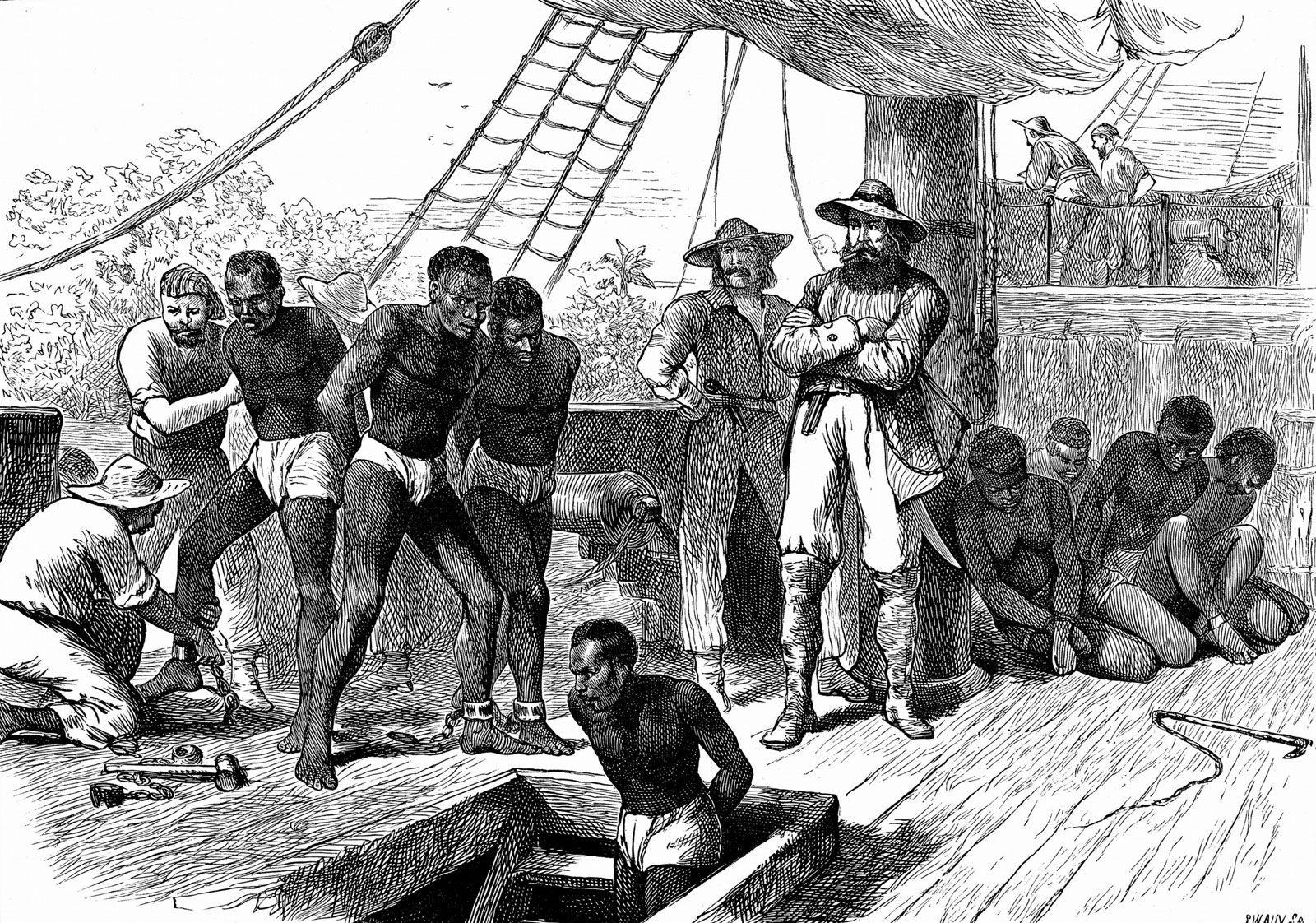The Dutch slave ship St. Jan started off for Curacao in the West Indies in 1659. Its log recorded deaths of slaves aboard, until between June 30 and October 29 a total of 59 men, 47 women, and 4 children had died. They were still 95 slaves aboard when disaster struck, thus matter-of-factly recorded:
Nov. 1. Lost our ship on the Reef of Rocus, and all hands immediately took to the boat, as there was no prospect of saving the slaves, for we must abandon the ship in consequence of the heavy surf. Nov. 4. Arrived with the boat at the island of Curacao; the Hon’ble Governor … ordered two sloops to take the slaves off the wreck, one of which sloops with eighty four slaves on board was captured by a privateer.
And here is the governor’s report to his board of directors in Holland:
What causes us most grief here is, that your honors have thereby lost such a fine lot of negroes and such a fast sailing bark which has been our right arm here.
Although I have strained every nerve to overtake the robbers of the negroes and bark, as stated in my last, yet have I not been as successful as I wished… .
We regret exceedingly that such rovers should have been the cause of the ill success of the zeal we feel to attract the Spanish traders hither for your honors benefit … for the augmentation of commerce and the sale of the negroes which are to come here more and more in your honors’ ships and for your account… .
I have witnessed with pleasure your honors’ diligence in providing us here from time to time with negroes. That will be the only bait to allure hither the Spanish nation, as well from the Main as from other parts, to carry on trade of any importance. But the more subtly and quietly the trade to and on the island can be carried on, the better will it be for this place and yours.

